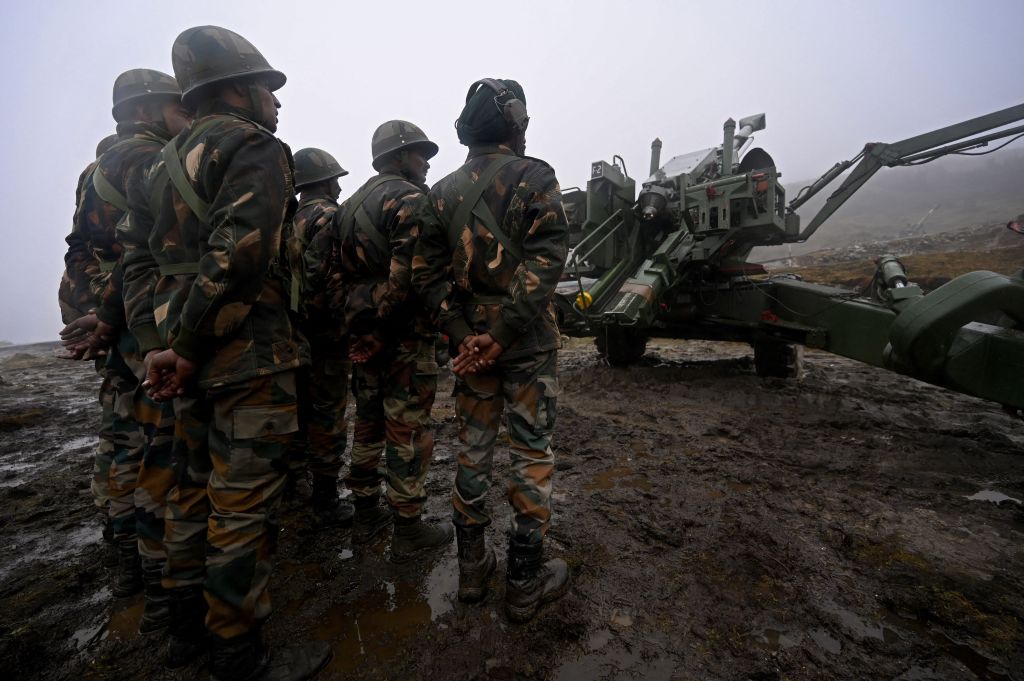Sarosh Bana

In a confrontation on 9 December, a sizeable detachment of Chinese troops attempted to breach the razorwired Line of Actual Control (LAC) in the Yangtse area of the Tawang sector in India’s northeastern state of Arunachal Pradesh. The intruders were beaten back with sticks and stones by Indian Army soldiers patrolling the area.
China’s shadow looms large over India, with cross-border threats surging since Xi Jinping came to power in 2013. The 69-year-old leader’s ascendance to a historic third five-year presidential term has daunted India.
New Delhi has been unable to resolve the border impasse since May 2020, when People’s Liberation Army (PLA) troops breached the LAC, clashed with Indian soldiers and overran vast tracts of the eastern sector of the border Union Territory of Ladakh. Xi’s troops also entered the Demchok and Chumar areas of Ladakh while he met Indian Prime Minister Narendra Modi in India in 2014. It is profoundly offensive for a world leader to see his country under assault while he is hosting the attacker’s leader on a state visit.
India fears China is ‘salami slicing’—scything through Indian territory with the intent of redrawing the LAC. Chinese troops have also opened additional fronts along the border with India’s Himalayan states of Uttarakhand and Sikkim.
The Yangtse clash may have been part of a wider design to unfold in days to come. This face-off was likely set up by senior Chinese commanders, since members of the PLA are extremely regimented and don’t operate without orders.
While the skirmish was brief, soldiers were wounded on both the sides. Twenty Indian soldiers were hurt and at least six of them needed to be airlifted for treatment to Guwahati in the adjoining state of Assam. The number of Chinese troops injured is believed to be higher. This was the first physical combat between the two sides since the deadly clash in the Galwan Valley in eastern Ladakh in June 2020 that took a toll of 20 Indian soldiers.
The Indian government, and the military, have largely withheld information on the alarming developments at the LAC, the Himalayan frontier dividing the nuclear-armed neighbours. Members of the parliamentary opposition and the media were branded ‘anti-national’ when they probed for answers.
Under pressure, Defence Minister Rajnath Singh told parliament on Tuesday that three infantry units of the Indian Army had ‘bravely stopped’ the Chinese army from transgressing the LAC and unilaterally changing its status quo. ‘I want to assure the House that no Indian soldier was killed or severely injured,’ he said. ‘I also assure the House that our Army can defend the country’s territorial integrity and is ready to tackle any transgression.’ He concluded, ‘I firmly believe the House will support the bravery and courage of our armed forces.’
Despite three border agreements—in 1993, 1996 and 2013—on maintaining peace and stability along the LAC, Beijing has consistently disputed the demarcations.
China has historically claimed the entire 83,743 square kilometres of Arunachal Pradesh at the eastern fringe of the LAC. In January 2021, Chinese workers backed by PLA troops crossed into the state to construct a village along its border with Tibet. India’s Ministry of External Affairs viewed China’s strategy of building civilian settlements in disputed frontier areas as part of its attempts to buttress its claims to the region. Beijing rebuffed this criticism, maintaining that the encroachment was ‘beyond reproach’ because it has never recognised Arunachal, which it calls Zangnan, or South Tibet.
The last gunshots were fired in anger on the India–China frontier in 1975 when four Indian paramilitary soldiers were shot dead in an ambush by the PLA at Tulung La in Arunachal Pradesh.
Tawang enshrines the Tawang Monastery, which is sacred to the Tibetans; it was founded by the Merak Lama Lodre Gyatso in 1681 in accordance with the wishes of the fifth Dalai Lama. Tibet controlled Tawang until 1914, when it entered into an agreement with British India that delineated the boundary in this region along what became known as the McMahon Line. While China never recognised the agreement, the Tibetans too regarded their pact with the British as being conditional on Beijing’s acceptance and deemed the McMahon Line ‘invalid’ when the Chinese refused to acquiesce.
People in India have been looking to their leadership to resolve the threat of war. Many are concerned that the government has made no resolute response even as India stands to forfeit a vast area, its soldiers are slain and maimed, and it is being outmanoeuvred by China militarily, diplomatically and politically.
New Delhi’s response will ultimately determine its standing in the global community and in its alliances.
No comments:
Post a Comment